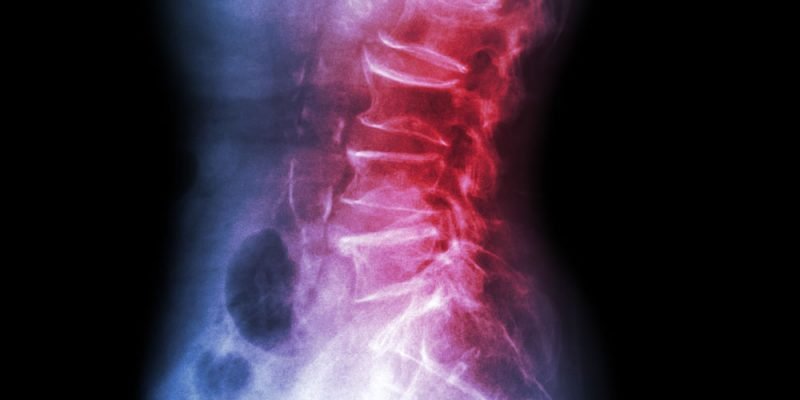Ankylosing Spondylitis, or AS, is a painful arthritic condition that commonly affects the lower back, but can also affect other areas of the body. AS can be difficult to diagnose because the development of the symptoms can take months to years. Eventually AS leads to painful flare-ups, with periods of temporary relief. In severe cases of the disease, the vertebrae can fuse together. This fusing affects the flexibility of the spine giving some patients the hunched-forward posture.
In more severe cases, the vertebrae can fuse together when ligaments turn into bone.
https://www.pharmacytimes.com/publications/issue/2016/august2016/understanding-ankylosing-spondylitis
Symptoms
- Stiffness – Especially in the spine, hips, knees, shoulders, jaw, and neck.
- Back pain
- Ligament & Tendon Pain
- Bent Posture
- Psoriasis or Psoriatic Arthritis
- Inflammatory Bowel Disease
- Uveitis (An Inflammatory Eye Condition)
- Dactylitis (Swollen fingers & toes)
- Heart trouble
- Bone Fusion
- Breathing trouble

Risk Factors
- Age – This disease tends to manifest symptoms in patients between 17-45 years old.
- Genetics – This disease is highly familiar. Having the HLA-B27 biomarker is also a strong indicator.
- Gender – Men are more likely to have AS, with a ratio of about 3:1. ³
Diagnosis
While your Primary Care Provider can diagnose AS, diagnosis is generally made by a rheumatologist after a thorough physical exam, typically including x-ray, CT, or MRI imaging. There is also a genetic marker, called HLA-B27, which is prevalent in patients with the disease.
STAT Research currently works with two board-certified rheumatologists: Dr. Sanford Wolfe, D.O., and Dr. Chacko Alappatt, M.D.
Treatment Options
The first line of treatment for AS is often a nonsteroidal anti-inflammatory drug (NSAIDs) like ibuprofen and naproxen. Secondary is disease-modifying antirheumatic drugs (DMARDs) such as methotrexate and sulfasalazine. However, these may not provide the progression of the joint and organ damage caused by the disease.
Newer Biologic DMARDS may slow progression by stopping inflammation before the joint damage occurs.
A more homeopathic therapies include maintaining a healthy body weight, eating a proper diet, practicing good posture and most importantly staying active and exercising.
Clinical Research
STAT Research is currently studying investigation treatments for AS. To get more information about these studies, check out our enrolling studies.
Sources
- Bolt, B. 2016, August 23 Understanding Ankylosing Spondylitis Retrieved from https://www.pharmacytimes.com/publications/issue/2016/august2016/understanding-ankylosing-spondylitis
- WebMD. Accessed May 24, 2019 | Ankylosing Spondylitis (AS)
https://www.webmd.com/arthritis/what-is-ankylosing-spondylitis - NIH.gov. Accessed May 24, 2019 | Gender differences in ankylosing spondylitis-associated cumulative healthcare utilization: a population-based cohort study.
https://www.ncbi.nlm.nih.gov/pmc/articles/PMC3059876/
